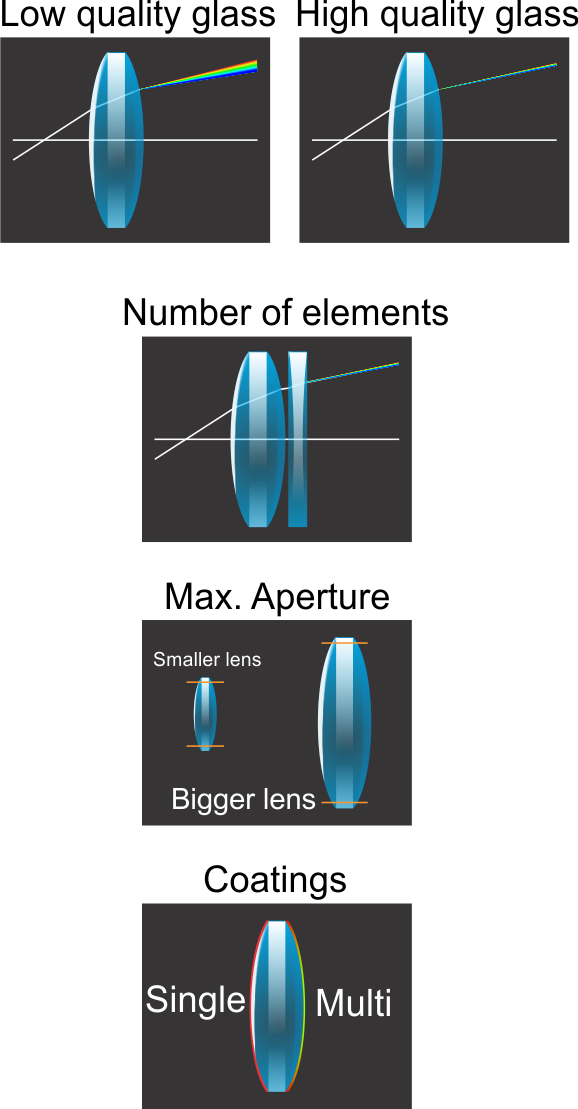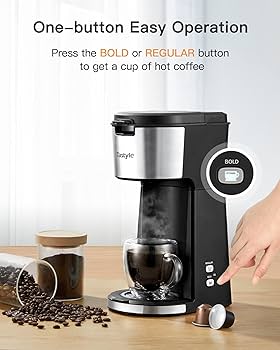Camera Lens Fundamentals: Understanding What Mm Means for Lenses
Introduction
Every photographer, whether an amateur or a professional, knows that the camera lens is an integral part of capturing the perfect shot. But have you ever wondered what 'MM' means when it comes to lenses? This guide will walk you through the fundamental aspects of camera lenses, unpack the meaning and significance of 'MM', and how this measurement can greatly influence your photography. Additionally, we will delve into different types of lens sizes and how they affect your photos. So, fasten your seatbelts, and let's embark on this enlightening journey!
What is the Function of a Camera Lens?
The camera lens could be considered as the eye of your camera, playing an indispensable role in your quest to capture the perfect shot. It serves multiple vital functions, all orchestrating together to create a beautifully composed image.
• Light Collecting: First and foremost, a lens is responsible for gathering light from the scene you are shooting. This aspect governs the image's brightness and contrast.
• Focusing the Light: Once the lens collects light, it focuses it to create an image on the camera's sensor, similar to how our eyes focus light onto the retina.
• Focal Length Adjustments: The lens elements work in harmony to adjust the lens's focal length. This adjustment affects how 'zoomed in' your subjects will appear in the final image.
• Images Control: A significant role of the camera lens is controlling the quality of the resultant images. Whether crisp and clear or purposely blurred for effect, the lens influences image sharpness, color, and contrast.
In essence, the camera lens translates your photographic vision into a tangible image. By manipulating the lens variables, you can creatively influence your photography, adding a unique touch to every shot you capture.
Unpacking MM: What Does It Mean for a Lens?
Understanding the meaning of 'mm' in the context of camera lenses can revolutionize your photography. MM, standing for millimeter, signifies the focal length of the lens. Let’s break this down further:
- Definition: The term focal length refers to the distance between the lens and the camera's sensor when your subject is clearly in focus. This means that a lens labeled as '50mm' has a focal length of 50 millimeters.
- Perspective: The metric 'mm' is crucial in understanding the perspective a lens can provide. A lower MM, like a 24mm lens, will give you a wide-angle view, providing a lot of the scene in front of you within the frame. On the other hand, a higher MM such as a 200mm lens, provides a narrow, detail-focused perspective, capturing less of the environment but emphasizing specific elements or subjects.
- Function: The MM measurement is directly related to the function of your lens. If you're aiming for broad shots like landscapes, cityscapes, or group photos, a lens with a smaller focal length (lower MM) might be your best bet. However, if you're interested in capturing isolated, detailed shots such as wildlife, sports events, or individual portraits, a higher MM lens might better suit your needs.
In essence, the 'mm' measurement on your lens is more than just a technical specification—it's a guide that can aid you in selecting the perfect lens for each photography project. By understanding how this single statistic impacts the functionality and perspective of your lens, you’ll be empowered to take more targeted control of your creative photography journey. Whether you're looking to encapsulate vast landscapes or detail-focused portrait work, the 'mm' metric is there to guide your lens choice and ultimately, enhance your photographic outcomes.
How Does MM Impact the Field of View and Depth of Field?
Understanding the millimeter (MM) specification is crucial because it significantly impacts two variables - the field of view and the depth of field. Here's how:

1. Field of View: This refers to the area visible through your lens. MM specification plays a key role here:
- *Lower MM value*: A lens with a lower MM, like a 24mm, provides a wide field of view perfect for capturing expansive scenes such as landscapes or large group shots.
- *Higher MM value*: In contrast, a higher MM lens like a 200mm gives a narrow field of view. This allows you to focus the viewer's attention on specific details or isolate a subject from its background. It's ideal for portrait or wildlife photography where you want to emphasize a single subject.
2. Depth of Field: This entails the area of your shot that is in sharp focus. Once again, the MM specification influences this:
- *Lower MM value*: A small MM lens has a deeper depth of field meaning both the foreground and background will be sharply in focus.
- *Higher MM value*: A high MM lens results in a shallower depth of field giving you that beautiful blurred background – or 'bokeh' – effect that makes your subject stand out sharply.
In a nutshell, the lower the MM, the wider the field of view and deeper the depth of field. Conversely, as MM increases, the field narrows and the depth of field becomes shallower. Hence, understanding the influence of MM is pivotal in obtaining your desired photographic effect.
Experimenting with MM: How Can Different Lens Sizes Influence Your Photography?
The millimeter measurement (MM) correlation to the focal length of your lens is pivotal in dictating the nature of the images you can produce. Dabbling with different lens sizes can add interesting nuances to your work and fuel your creative aspirations. Here's how varying lens dimensions can shape your photography:
- Wide-angle lens (Lower MM): Ideal for capturing broader perspectives like breathtaking landscapes, bustling street scenes, and symmetric architectural marvels. Wide-angle lenses generally fall in the range of 14-35mm, allowing the photographer to cover a larger scene while standing the same distance from the subject.
- Pros: Wide field of view, great for capturing expansive landscapes and architecture.
- Cons: Potential for visual distortions at the edge of the frame.
- Telephoto lens (Higher MM): The go-to choice when your photography demands closer views of distant subjects, like in wildlife or sports photography. With a range above 70mm and going up to 200mm (or beyond), a telephoto lens can give your subject the illusion of being closer than it actually is.
- Pros: Ability to capture distant objects clearly, create a blurred background effect.
- Cons: Higher likelihood of camera shake, usually expensive.
- Normal lens (Around 50MM): Resembling the perspective of the human eye, Normal lenses are versatile tools great for a variety of scenes, though they are often favored in portrait photography.
- Pros: Versatile, often delivers sharp images.
- Cons: May not offer as wide a field of view as wide-angle lenses, or the close-up capabilities of telephoto lenses.
The world of photography is a playground for creativity. Never shy away from experimenting with differing lens measurements. After all, innovation rests at the intersection of knowledge and exploration.
From Fisheye to Superzoom: What Types of Lenses and Their MM Measurements Should a Photographer Know?
For photographers keen on diversifying their photographic styles, understanding different types of lenses and their MM measurements is essential. Here is a categorical breakdown of lens types along with their respective MM measurements:
1. Fisheye Lenses (8-10mm): Manifests an extremely wide, hemispherical image. Ideal for creating panoramic or spherical photos.
- _Pro:_ Captures a super wide, distorted view.
- _Con:_ Distortion might not be suitable for all shots.
2. Ultra-Wide-Angle Lenses (14-24mm): Exemplary for expansive landscapes, architecture, interior scenes.
- _Pro:_ Captures large scenes not otherwise possible.
- _Con:_ Potential distortion of photo edges.
3. Wide-Angle Lenses (24-35mm): Optimum for street photography, group portraits, and broad landscapes.
- _Pro:_ Incorporates much of a scene into the frame.
- _Con:_ Distances can seem further than they are.
4. Normal Lenses (35-70mm): Mimics the human eye’s perspective making them versatile for a variety of situations.
- _Pro:_ Realistic field of view.
- _Con:_ Less suitable for specialized shots (e.g., macros, wildlife).
5. Telephoto Lenses (70-200mm): Perfect for wildlife, sports, portraits – anything requiring a close view from a distance.
- _Pro:_ Enables close shots from afar.
- _Con:_ Usually heavier and more expensive.
6. Superzoom Lenses (Over 200mm): Fit for specialized far-distance shots, often used in wildlife and astronomy photography.

- _Pro:_ Extreme zoom capabilities.
- _Con:_ Can compromise image quality due to diffraction.
Understanding and experimenting with different MM measurements across lens types will surely help you advance in your photography journey - whether you're shooting astrophotography with a Superzoom or street scenes with an Ultra-Wide lens.
Conclusion
In summary, understanding MM in lens specifications and how it affects the field of view and depth of field can be a game-changer for your photography. This understanding allows you to choose the right lens for your specific needs, whether capturing a wide expanse of landscape or getting the perfect frame for a portrait. So, let's grab our cameras and start experimenting with different MM lenses, and witness the difference it brings to our photography.
Related FAQs about what does mm mean for lens
What is the role of MM in determining lens compression?
Lens compression is the perception that the distance between the foreground and background is reduced. Higher MM lenses tend to create more compression, making elements appear closer together. Conversely, lower MM lenses create less compression, so elements appear more spread out.
How does MM play into choosing a lens for a specific photography type?
Your choice of MM profoundly influences how your photos will look. For wide shots like landscapes, a lower MM lens is suitable. For detailed shots like portraits or wildlife, a larger MM lens is appropriate. Therefore, understanding your subject and MM's role is crucial in lens selection.
Is a higher MM always better in lens selection?
Not necessarily. The right MM for a lens depends on the type of photography you're involved in. While a higher MM may provide greater detail for distant subjects, it may not be suitable for wide-angle shots or when a lot of the scene needs to be in the frame.


